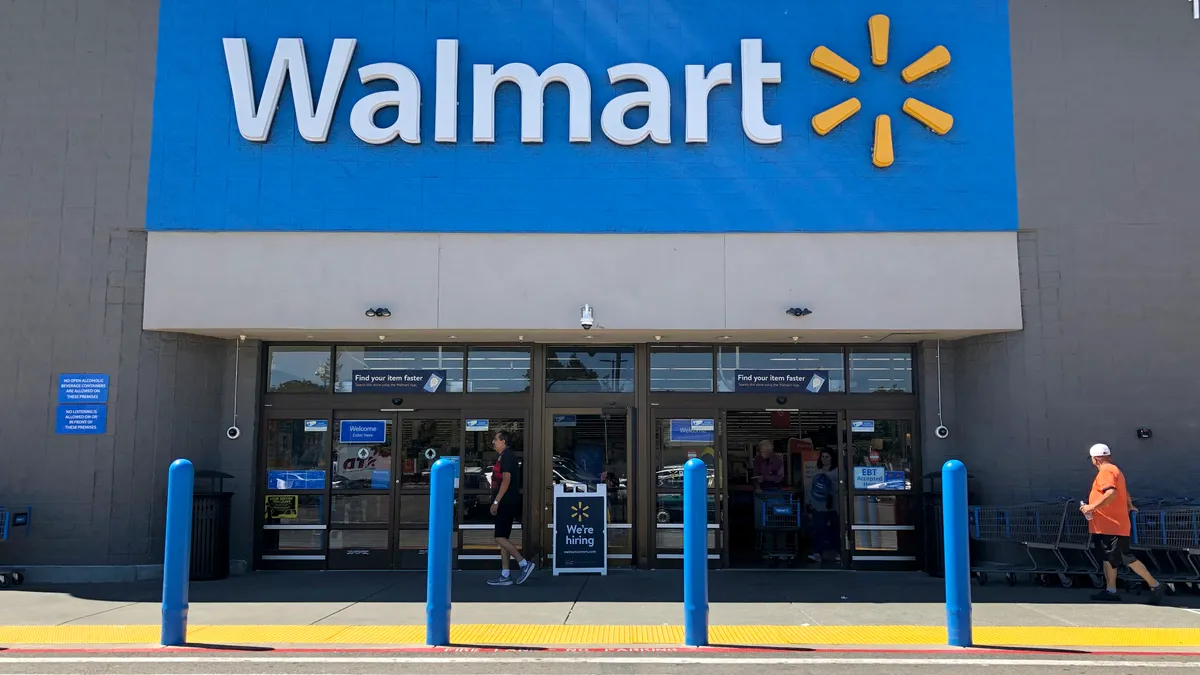Walmart is focusing on infrastructure and e-commerce investments as it anticipates a future in which increasingly more of its shoppers migrate online, CFO John David Rainey said at the Raymond James Institutional Investors Conference Tuesday.
“Today, the vast majority of our overall profits are attributable to in-store brick and mortar in the U.S.,” he said. In five years Rainey expects the company’s income stream will be much less dependent on its physical locations. He also suggested that revenue will grow from e-commerce, including marketplaces that offer third-party merchandise.
Walmart invested $7.2 billion in supply chain, omnichannel and technology in fiscal year 2022, according to the company’s most recent 10-K report.
While supply chain mix continues to be “the biggest uncertainty for us,” he said, the company has made considerable improvements to its supply chain and in-store technology that have reduced costs and improved the way associates work.
Technology investments, for example, helped Walmart make its e-commerce fulfillment process more efficient, bringing down a 12-step process to a five-step endeavor, he said. Walmart is also investing in in-store automation to reduce the burden on associates and improve workflow.
“There’s a lot of automation that Sam’s [Club] is doing in stores…we’ve got automated bots that are going down the aisle and basically checking whether things are in stock or out of stock, what needs to be replenished,” he said. In addition, roughly one in four customers who shop at Sam’s Club use scan-and-go payment technology, he added. Sam’s Club is a division of Bentonville, Arkansas-based Walmart.
The company is strategically positioning its investments to align with changes in shopper behavior, particularly the shift toward e-commerce as a growing revenue driver.
Rainey pointed to the company’s network of 10,000 physical stores across the world, and the possibility of using those locations as distribution points for customers as they increasingly gravitate toward e-commerce over time.
Walmart’s store-fulfilled delivery sales have nearly tripled over the last two years, with the company now seeing more than $1 billion a month in that category, Rainey said on the company’s fourth quarter earnings call in February. The company also reported growth in store-based delivery capabilities due to rising e-commerce activity.
Rainey acknowledged that prices for goods the company sells remain high, with hikes of 3% across the board year-over-year, he said at the conference. Food is a “persistently high” price category, while general merchandise has started to decline in some categories. Problem areas for pricing include electronics, home and apparel, which are prone to the effects of “discernment by the consumer,” he noted.
Walmart, in the fourth quarter of 2022, reported that U.S. comparable sales were up 8.3% and e-commerce sales grew 17%. The company is taking a cautious approach to 2023 expectations in response to various pressures, Rainey suggested during the fourth quarter earnings call.











